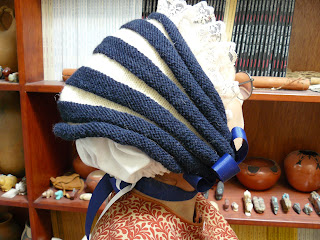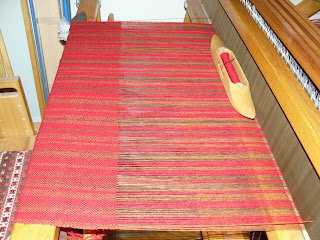I like the way it turned out. I struggled a bit with the ribbons because I did not want the large width ribbon specified in the pattern as written. I decided on a more subtle look. This cap is really, really warm. Since the winter so far has been very cool in San Diego, I thought I would definitely need to be wearing this cap.
So imagine my surprise when the third Saturday turned out to be 80 degrees. People were walking around Old Town in shorts and tee shirts. A young family visiting from Philadelphia could not stop smiling and laughing. But for the wearing of the wool bonnet? Not so good. It stayed home.
In the photographs I am wearing the Prudence cap over the day cap I made completely by hand from a period appropriate commercial pattern. It's hard to find day cap patterns that aren't too puffy, and that don't tie under the chin. Still looking.






